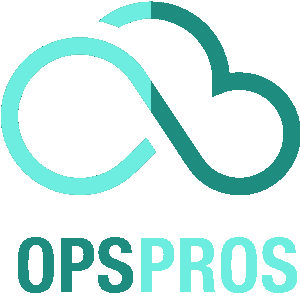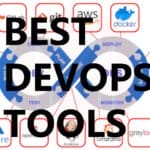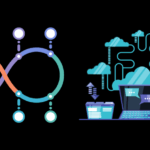Preparing for the SAFE DevOps Practitioner Exam can be a daunting task. However, with the right information and strategies, you can excel in the exam and achieve certification. This section provides valuable insights and tips to help you prepare effectively for the exam.
By the end of this section, you will have a solid understanding of the SAFE DevOps framework, important DevOps concepts, and strategies for acing the exam. You’ll also learn how to implement DevOps practices, understand DevOps tools and technologies, and ensure quality assurance in DevOps. Additionally, this section will cover monitoring and incident management, DevOps culture and collaboration, and exam tips and preparation strategies.

Key Takeaways:
- The SAFE DevOps Practitioner Exam requires thorough preparation and understanding of DevOps concepts and practices.
- Effective preparation strategies include understanding the SAFE DevOps framework, implementing DevOps practices, and learning about DevOps tools and technologies.
- Quality assurance and monitoring and incident management are critical components of the DevOps process.
- Cultivating a DevOps culture and effective collaboration techniques are crucial for success in the exam and in real-world DevOps environments.
Understanding the SAFE DevOps Framework
The SAFE DevOps framework is a set of principles and practices designed to integrate software development (Dev) and IT operations (Ops) workflows. The goal is to create a culture of collaboration, communication, and continuous improvement, resulting in faster software delivery and enhanced business outcomes.
The framework is based on the following DevOps concepts:
- The Three Ways: Flow, Feedback, and Continual Learning and Experimentation
- Continuous Delivery Pipeline: Continuous Exploration, Continuous Integration, Continuous Deployment, and Release on Demand
- A Lean-Agile Mindset: Systems thinking, Transparency, Alignment, Built-in Quality, and Lean Flow
The SAFE DevOps framework also includes several key features and frameworks:
- Agile Development: An iterative approach to software development that emphasizes collaboration, flexibility, and customer feedback.
- Continuous Integration (CI): A practice that requires developers to frequently integrate their code into a shared repository, allowing for early detection of integration issues and faster feedback.
- Continuous Deployment (CD): A process that automates the deployment of software to production, facilitating faster and more reliable releases.
- Infrastructure as Code (IaC): A practice that treats infrastructure as software, allowing for greater automation, consistency, and scalability.
- DevSecOps: A practice that integrates security into the DevOps process, embedding security best practices into every aspect of software development and delivery.
Understanding the SAFE DevOps Framework in Practice
Implementing the SAFE DevOps framework involves adopting a new mindset and implementing new practices. It requires a commitment to collaboration, communication, and continuous improvement.
At its core, the framework is designed to improve software delivery by reducing lead times, increasing deployment frequency, and improving quality. This is done by breaking down silos between development and operations teams, and creating a culture of shared responsibility for software delivery.
The SAFE DevOps framework emphasizes the importance of automation, enabling teams to rapidly test, deploy, and monitor their code. It also encourages the use of data to drive decisions, with a focus on measuring key performance indicators (KPIs) to identify areas for improvement.
Overall, the SAFE DevOps framework provides a comprehensive set of principles, practices, and tools for implementing DevOps at scale. By understanding the fundamental concepts, features, and frameworks that underpin the framework, individuals can enhance their skills and prepare effectively for the SAFE DevOps Practitioner Exam.
Implementing DevOps Practices
DevOps practices are a crucial aspect of the SAFE DevOps Practitioner Exam, and a solid understanding is necessary to excel. DevOps brings together development, operations, and business teams to deliver software quickly and efficiently, promoting a collaborative approach to application development. To implement DevOps practices effectively, it is essential to understand agile methodologies, continuous integration, continuous deployment, and automation.
Agile Methodologies
Agile methodologies are iterative and collaborative approaches to software development. Agile development emphasizes flexibility and responsiveness to changes in requirements and feedback from users. Agile methodologies encourage teams to focus on delivering working software through incremental and continuous delivery. This iterative approach to development promotes continuous improvement and enables teams to respond to changes quickly.
Continuous Integration (CI)
Continuous Integration (CI) is a process of automating build and testing processes continuously. In CI, developers frequently integrate their code changes into the shared code repository. This allows teams to detect issues early in the development cycle, reducing the chances of defects and ensuring that code changes integrate smoothly with the rest of the software. Popular CI tools include Jenkins, GitLab, and CircleCI.
Continuous Deployment (CD)
Continuous Deployment (CD) is a process of automating the deployment of code changes after successful CI. CD promotes the frequent and automated release of software, ensuring that changes can be delivered quickly and efficiently. The deployment pipeline is automated, and code changes are continuously deployed into production. Automation is essential to ensure safe and reliable deployments. Effective CD requires close collaboration between development, operations, and testing teams.
Automation
Automation is a core principle of DevOps, and it enables teams to deliver software efficiently and reliably. Automation involves using tools to automate manual, repetitive tasks, and processes. Automation lets teams focus on high-value tasks, promoting consistency and reducing errors. Automation ensures that the deployment pipeline is efficient, reliable, and repeatable. Popular automation tools include Puppet, Chef, and Ansible.
Effective DevOps implementation requires a solid understanding of these practices, frameworks, and methodologies. It is essential to understand how each practice fits into the larger DevOps picture, enabling teams to deliver software quickly and efficiently. In the next section, we will explore popular DevOps tools and technologies that are used to implement these practices.
Examining DevOps Tools and Technologies
As organizations adopt DevOps practices, they rely on a wide range of tools and technologies that automate and streamline their software delivery pipeline. Understanding these DevOps tools and technologies is essential for passing the SAFE DevOps Practitioner Exam.
The most popular DevOps tools and technologies fall into the following categories:
| Category | Examples |
|---|---|
| CI/CD | Jenkins, GitLab, CircleCI, Travis CI |
| Infrastructure as Code (IaC) | Terraform, CloudFormation, Ansible, Puppet, Chef |
| Containerization and Orchestration | Docker, Kubernetes, OpenShift, Mesos, Swarm |
| Monitoring and Logging | Prometheus, Grafana, ELK Stack, Splunk, Datadog |
DevOps tools and technologies vary greatly based on the functional needs of the organization, its size, and the complexity of its software delivery pipeline. For example, a small startup may use a simple CI/CD tool like Jenkins or Travis CI, while a large enterprise may use a more advanced tool like GitLab or CircleCI.
Industry trends and best practices in DevOps tooling are constantly evolving, so it’s important to stay up-to-date with the latest developments. Stay informed by following industry blogs, webinars, and attending relevant conferences and workshops.
Industry Examples
Many companies today have adopted DevOps practices and use a variety of tools and technologies to support their software delivery pipeline. Here are some examples:
- Amazon Web Services (AWS) – AWS offers a variety of DevOps tools and services, including CodePipeline, CodeBuild, and CodeDeploy, which help automate the entire software delivery process.
- Netflix – Netflix has open-sourced many DevOps tools, including Spinnaker, which is a continuous delivery platform used for deploying applications to multiple cloud platforms.
- Spotify – Spotify uses an advanced CI/CD pipeline, which includes deployment canaries, feature flags, and A/B testing, to continuously deliver new features to their users.
- Google – Google uses Kubernetes, an open-source container orchestration system, for managing its massive-scale containerized workloads.
It’s important to note that while industry examples can be helpful, the specific DevOps tools and technologies used by a company may not apply to your organization’s unique needs and requirements.
Understanding Continuous Integration (CI)

Continuous Integration (CI) is a DevOps practice that facilitates the automatic merging of code changes and ensures the continuous delivery of high-quality software products. CI has become an essential tool in modern software development, enabling teams to build, test, and deploy code efficiently and effectively. By automating the coding and testing process, CI helps to identify and address issues quickly, reducing the overall time to market.
Benefits of Continuous Integration (CI)
CI offers several benefits to software development teams, including:
- Improved code quality: CI detects issues early in the development process, reducing the risk of introducing bugs or other defects later on.
- Increased efficiency: CI automates the build, test, and deploy processes, allowing teams to focus on developing new features and delivering high-quality software products faster.
- Reduced costs: CI uncovers issues early, reducing the likelihood of expensive rework or unplanned downtime.
- Better collaboration: CI enables teams to share code more effectively, promoting collaboration and communication between team members.
Popular CI Platforms: Jenkins and GitLab
Two of the most popular CI platforms are Jenkins and GitLab. Jenkins is an open-source platform that enables teams to automate almost any aspect of the software delivery process. It offers a vast range of plugins and an active community that provides support and advice. GitLab is a web-based platform that provides integrated CI/CD tools, creating a seamless process from planning to deployment. It offers features such as built-in Git repository management and issue tracking, making it an all-in-one platform for DevOps teams.
Mastering Continuous Deployment (CD)
Continuous Deployment (CD) is an essential aspect of DevOps automation, enabling organizations to reduce lead times and accelerate the delivery of new features and products. It involves automatically deploying changes to production after they have passed automated testing and quality assurance checks.
The deployment pipeline is a critical component of CD. It represents the different stages that code changes must pass through before being deployed to production. Common pipeline stages include building, testing, and deploying the application. The pipeline should be fully automated, enabling teams to release code changes quickly and reliably.
Effective implementation of CD requires robust DevOps automation practices. This involves the use of automation tools and processes for testing, deployment, and infrastructure management. Automation reduces manual work, improving efficiency, and enabling teams to focus on more critical tasks.
When implementing CD, it’s crucial to establish clear communication channels between development, operations, and security teams. This ensures that everyone is on the same page and can work together effectively to achieve CD goals.
Best practices for Continuous Deployment
Here are some best practices for implementing Continuous Deployment:
- Develop a fully automated deployment pipeline, encompassing all stages of the software development lifecycle.
- Implement a comprehensive testing suite to ensure that changes are thoroughly tested before being released to production.
- Use automated release management tools to enable fast and reliable deployment of code changes.
- Establish a culture of collaboration and communication between development, operations, and security teams.
- Implement robust security practices to ensure that code changes are deployed securely.
Security in DevOps
One of the key concepts in DevOps is the integration of security into the development process, known as DevSecOps. DevSecOps emphasizes the importance of security best practices, including secure coding, vulnerability management, and continuous security testing.
Secure coding is the practice of writing code that is free from vulnerabilities and exploits. This includes using safe coding practices and avoiding common coding mistakes. Vulnerability management involves identifying and mitigating potential security risks in software and infrastructure.
Implementing continuous security testing is also critical in DevSecOps. This involves incorporating automated security testing into the development process, allowing for vulnerabilities to be identified and addressed promptly.
Overall, DevSecOps is a crucial aspect of DevOps, and understanding security best practices is essential for success in the SAFE DevOps Practitioner Exam.
Ensuring Quality Assurance in DevOps
The DevOps process emphasizes the importance of quality assurance (QA) to ensure that software is tested and released at a high standard. Here, we’ll cover some essential strategies and testing techniques to help you excel in QA-related exam questions.
Testing Strategies
Testing is an integral part of the DevOps process and is essential in delivering high-quality software. With the goal of continuous delivery in mind, teams must focus on building robust testing frameworks that can automate as much of the testing process as possible.
One common technique is exploratory testing, where testers interact with the system with no preconceived testing plans. This allows teams to find issues that traditional testing may miss and discover usability issues that could impact the end-user.
Another strategy is shift-left testing, where testing occurs earlier in the development lifecycle. By testing earlier, teams can identify issues before they become more costly to fix, reducing the overall time to market.
Test Automation
Test automation is critical in ensuring that software is released quickly and at a high standard. Automated testing reduces the burden on manual testers, increases test coverage, and reduces the time required to run tests.
Popular test automation frameworks include Selenium, Appium, and JMeter. These frameworks allow testers to write automated tests to check the functionality of the software and to ensure that previously identified bugs have been fixed.
Performance Monitoring
Performance monitoring is a crucial aspect of QA in the DevOps process. Monitoring systems can help identify bottlenecks and areas where performance can be improved. By monitoring performance, teams can ensure that software is delivering the best possible experience to the end-user.
Tools such as Grafana and InfluxDB can help teams monitor the performance of their systems. These tools provide real-time metrics and visualizations, enabling teams to identify and address performance issues quickly.
QA is an integral part of the DevOps process, ensuring that software is tested and released at a high standard. By using testing strategies, test automation, and performance monitoring, teams can build a robust QA framework, allowing them to release software quickly and at a high standard.
Agile Release Management

Agile release management is a critical component of the DevOps process. It involves the planning, scheduling, and coordination of software releases, ensuring that they meet the necessary quality and functionality requirements.
Release planning is an essential aspect of agile release management. This involves breaking down the release into smaller, more manageable components, enabling teams to plan and execute them more effectively. It also involves identifying the necessary resources, such as team members, tools, and environments, to ensure a successful release.
Deployment strategies are also a crucial consideration in agile release management. There are various deployment strategies available, such as rolling deployment, blue-green deployment, canary deployment, and more. Each strategy has its advantages and disadvantages and is suited to different scenarios.
| Deployment Strategy | Description | Advantages | Disadvantages |
|---|---|---|---|
| Rolling Deployment | Gradual deployment of changes to the production environment, one server at a time. | Less risk of downtime, easy rollback if required. | Can be time-consuming, requires careful planning and coordination. |
| Blue-Green Deployment | Two identical environments, one active and one inactive, with changes deployed to the inactive environment. | Less risk of downtime, easy rollback if required. | Requires more resources, can be complex to set up. |
| Canary Deployment | Gradual rollout of changes to a small subset of users or servers to test the changes before wider deployment. | Less risk of downtime, enables testing of changes before full deployment. | Requires careful planning and monitoring. |
Agile release management is crucial for the efficient and effective delivery of software. By breaking down releases into smaller components and utilizing appropriate deployment strategies, teams can ensure smooth and successful releases.
Monitoring and Incident Management
When it comes to DevOps, monitoring and incident management are essential components that ensure the smooth functioning of the system. Monitoring helps in identifying the potential issues that might occur, while incident management is responsible for managing those issues.
Log analysis is a crucial aspect of monitoring. Analyzing logs helps in identifying errors, system crashes, and other anomalies. The logs can also provide valuable insights regarding system performance, enabling teams to make informed decisions regarding optimization.
Incident response techniques play an important role in incident management. Teams need to have a predefined incident response plan that outlines the necessary steps in case of an incident. This plan should include communication channels, escalation paths, and responsibilities.
Alerting tools are also crucial in monitoring and incident management. These tools can send notifications and alerts to the relevant teams when an incident occurs, enabling them to take immediate action. Proper configuration of alerting tools is essential, as incorrect configuration can lead to alert fatigue and create unnecessary distractions.
DevOps Culture and Collaboration

DevOps is not just a methodology or a set of technical practices; it is a culture that emphasizes collaboration, teamwork, and communication. The success of DevOps depends heavily on how well different teams within an organization can work together towards a common goal.
DevOps culture is all about breaking down silos and promoting cross-functional collaboration. This means that development, operations, security, and QA teams need to work closely together, sharing knowledge, learning from each other, and collaborating to achieve business objectives. Effective communication is an essential component of DevOps culture, with teams using tools like Slack, Jira, and Confluence to stay connected and collaborate in real-time.
Teamwork is another critical aspect of DevOps culture. Teams should be organized around products or services rather than functional silos, with each team member owning a specific area of responsibility. This approach fosters a sense of ownership and accountability, with everyone working towards a common goal. Collaboration goes beyond just working together, with teams encouraged to innovate and experiment, trying new ideas and approaches to achieve better outcomes.
One of the most effective ways to promote DevOps culture is to establish cross-functional teams that bring together members from different functional areas. These teams are responsible for a specific product or service, with members collaborating closely to deliver value to the business. Additionally, DevOps teams should embrace continuous learning and improvement, with a focus on experimentation, feedback, and sharing knowledge and best practices.
Exam Tips and Preparation Strategies
Preparing for the SAFE DevOps Practitioner Exam requires a structured approach. Here are some exam tips and preparation strategies to help you optimize your study efforts and succeed:
Understand the Exam Requirements and Format
Before starting your preparation, make sure you understand the exam requirements and format. Familiarize yourself with the exam duration, passing score, number of questions, and types of questions to expect. You can find this information on the official exam website or study materials.
Create a Study Plan
A study plan can help you organize your time effectively and ensure you cover all the exam topics. Break down the content into manageable chunks and allocate specific time slots for each section. Make sure you include time for practice exams and revision.
Practice Exams
Practice exams are an excellent way to prepare for the SAFE DevOps Practitioner Exam. They help you assess your knowledge level and identify areas that require improvement. Try to simulate the exam environment as closely as possible, and use the results to adjust your study plan accordingly.
Focus on the High-Weightage Topics
The exam questions are weighted differently, with some topics having a higher weightage than others. Ensure you understand these high-weightage topics thoroughly and allocate sufficient study time for them. Focus on understanding the concepts behind each topic rather than memorizing specific details.
Use Multiple Study Resources
Using multiple study resources can enhance your understanding of the exam topics and increase your chances of success. Choose study materials that align with your learning style, such as videos, books, or online courses. Make sure you use reputable resources from trusted sources.
Manage Your Time Effectively
Time management is crucial during the exam. Ensure you read and understand each question before attempting to answer it. Allocate time for each question based on its weightage, and prioritize the high-weightage questions first. If you get stuck on a question, move on and come back to it later.
Get Enough Rest and Take Breaks
Getting enough rest and taking breaks is essential for optimal exam preparation. Ensure you get sufficient sleep, eat healthy food, and exercise regularly. Take regular breaks during your study sessions to prevent burnout and maintain your focus.
Conclusion
Preparing for the SAFE DevOps Practitioner Exam requires time, dedication, and a structured approach. By following these exam tips and preparation strategies, you’ll be well-equipped to tackle the exam with confidence and succeed.
FAQs

Q: What is the SAFE DevOps Practitioner Exam?
A: The SAFE DevOps Practitioner Exam is a certification exam that assesses individuals’ knowledge and understanding of the SAFE DevOps framework, practices, tools, and concepts.
Q: How can I prepare for the SAFE DevOps Practitioner Exam?
A: To prepare for the SAFE DevOps Practitioner Exam, it is recommended to study the fundamentals of the SAFE DevOps framework, understand key DevOps practices and tools, and practice with sample exam questions and scenarios.
Q: Are there any practice exams available for the SAFE DevOps Practitioner Exam?
A: Yes, there are practice exams available for the SAFE DevOps Practitioner Exam. Practicing with sample exam questions can help you familiarize yourself with the exam format and assess your knowledge and readiness.
Q: How important is time management during the SAFE DevOps Practitioner Exam?
A: Time management is crucial during the SAFE DevOps Practitioner Exam. It is important to allocate enough time for each question and avoid spending too much time on any particular question. Managing your time effectively will help you complete the exam within the allotted time frame.
Q: Can I retake the SAFE DevOps Practitioner Exam if I don’t pass?
A: Yes, you can retake the SAFE DevOps Practitioner Exam if you don’t pass. However, there may be a waiting period and additional fees associated with retaking the exam. It is recommended to thoroughly review your study materials and identify areas of improvement before attempting a retake.
Noah is an accomplished technical author specializing in Operations and DevOps, driven by a passion ignited during his tenure at eBay in 2000. With over two decades of experience, Noah shares his transformative knowledge and insights with the community.
Residing in a charming London townhouse, he finds inspiration in the vibrant energy of the city. From his cozy writing den, overlooking bustling streets, Noah immerses himself in the evolving landscape of software development, operations, and technology. Noah’s impressive professional journey includes key roles at IBM and Microsoft, enriching his understanding of software development and operations.
Driven by insatiable curiosity, Noah stays at the forefront of technological advancements, exploring emerging trends in Operations and DevOps. Through engaging publications, he empowers professionals to navigate the complexities of development operations with confidence.
With experience, passion, and a commitment to excellence, Noah is a trusted voice in the Operations and DevOps community. Dedicated to unlocking the potential of this dynamic field, he inspires others to embrace its transformative power.







